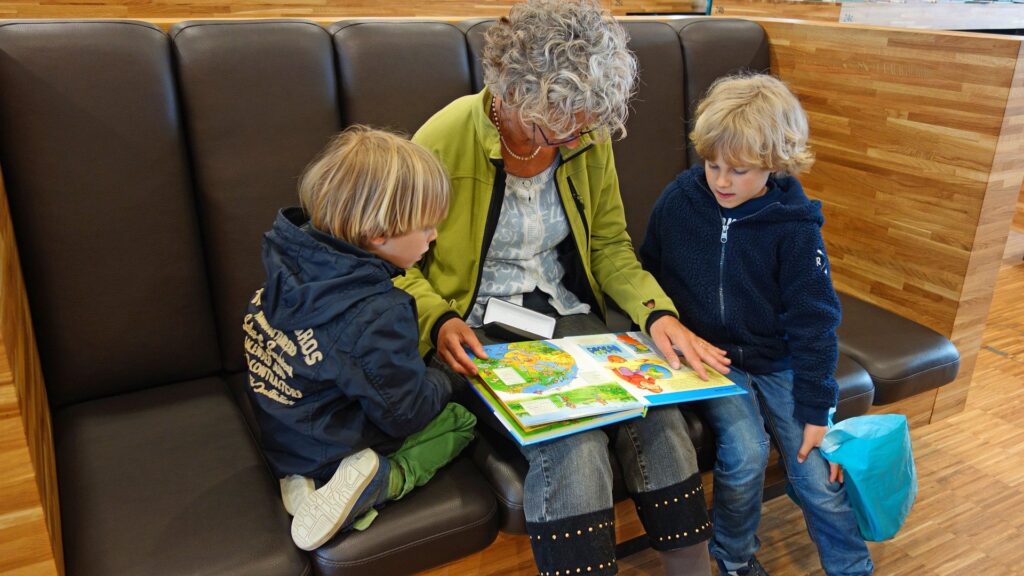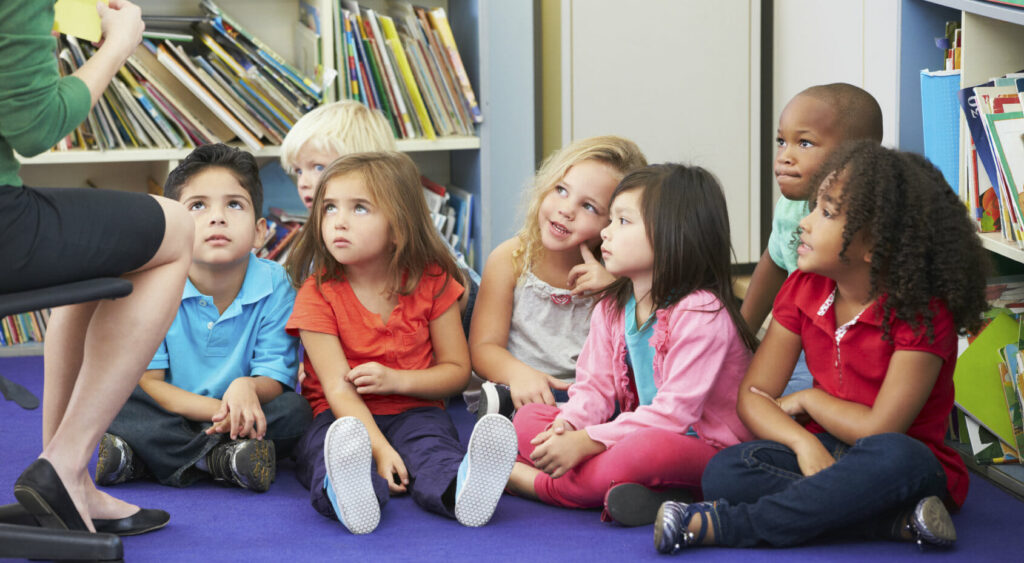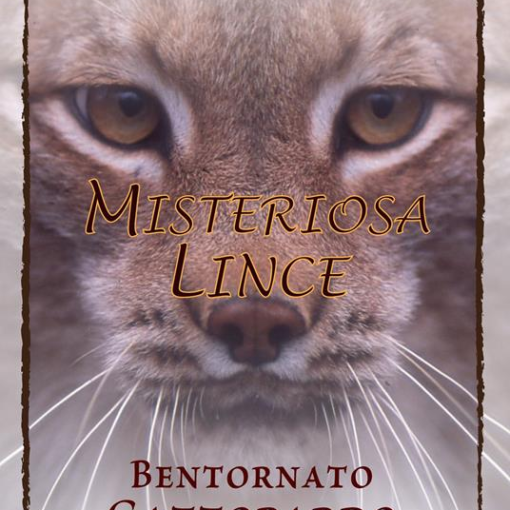
Because the word is our most immediate means of communication and the children when they start to articulate the words begin the conquest of their autonomy.
It is important to narrate because every story, fable, or fairy tale represents a path of growth. Playing between the fantastic and the real allows you to go through the different steps typical of the human dimension of growth.
The stories, mediating between the world of concreteness and other worlds, favour the experimentation of new cognitive paths, allow you to build an inner world, an awareness, through which you can perceive the real and the imaginary in different ways.
In stories, as in life, roles are present, there is no lack of surprises, dangers, pleasant and unwanted encounters, moods, feelings, fears, fears, and obstacles to overcome emerge. Through the story, read or invented and then narrated, all these aspects are made explicit and evident; it becomes easier to understand the origin of our fears, our feelings, to understand how to stem a danger, with which “weapons” to be able to face “The bad guy” or “the terrible dragon”, as the hero of the fairy tale or fable bravely does; or, again, when to seek help from the people we trust (the good king, the fairies, the donor, …), to learn to rely on others.
by telling fairy tales or events that have taken place, the child is cared for, because while narrating or reading with him, the time, attention and concern that are dedicated to them will contribute to building their safety.
Weaving a story is a good investment because it allows children to express feelings, situations, moods. In the school environment, it promotes a collaborative and confrontational climate. In the family it can be a way to learn about the events that have animated the life of the family over time, building in children the awareness of their historical-temporal place within their living environment, both in family and society.
Fairy tales, in particular, are multidimensional and they effectively complement the interdisciplinary approach, which is fundamental in today’s school. Fairy tales, fables, and tales also become possibilities for prevention, showing children, through a fantastic story, correct ways and attitudes to keep in certain situations, against the background of shared moral values.
Through the fairy tale or fable, any message can be translated and conveyed: an explanation, an idea, a reason, a value … to tell or read is to play roles decided by those who invent the story because they want to communicate something important.
So the story, in order to communicate something and give meaning to the narrative, must invent the “right” story that, through the narrative pretext, transmits the true “content” that the story wishes to convey, so that through those characters, those roles, those events highlight the real message.

Creating stories together (for instance, in a class group or on a Sunday afternoon with dad and mom) allows the child to take a further step: to relate, seek harmony, negotiate choices, plan and agree on communication strategies.
Fairy tales, fables, and tales are a bridge between adulthood and childhood.
So stories help to grow, play and learn.
Stories may last the whole school year or be built in “installments” in the family and, through various developments, constitute the horizon on which the whole class moves or a series of moments with parents. Fairy tales reproduce fundamental stages of individual development or become metaphors of the history of humanity; they are a free zone between the needs of the internal world and the demands of the external one.
They represent the right development process in a fantastic way and make the experience of their own growth attractive to the child.
The characterizations present in the story allow us to experience a parallel world, that of “let’s pretend that…“, where the individual can behave and feel like the good or the bad one, etc … and can move in different contexts, experience different variations and solutions. In each story we find different evolutionary characteristics: the temporal succession, the gradualness, the overcoming of existing constraints, the ability to broaden one’s point of view. The fable, by its very structure, is an object with which we can play and everyone can appropriate, according to their personal times and ways, the contents transmitted.
We have always transmitted social or individual rules, beliefs, and values through narrated facts: fables and fairy tales are metaphors of commonly shared norms. The attitudes of the characters become vehicles and witnesses, for the reader and the listener, of how it is socially correct to approach the events of life; the very evolution of the narrated stories creates the shared morality. Fairy tales, like a parallel world, give everyone the opportunity to rest, reflect, have fun. Using fantastic stories acquires educational value in itself, as it allows you to go beyond rigid causality, giving you the opportunity to react and deal with events.
Usually, literary production, and consequently the creation of fairy tales, fables, and stories, is linked to expressiveness. This aspect sometimes also affects daily practices, when it is stated that some children more than others have very strong creative abilities. Of course, the way (the technique) with which a story is created, a fable is important, but the main purpose of our action must be the involvement of the child.
The parent, the teacher, the operator must therefore encourage the participation of all the children present, soliciting and stimulating the imagination and creativity of all, starting also from reality, from situations that children know and master.
Fantastic processing, sharing, sharing, telling and living the fairy tale/fable are all tools that foster, in addition to instrumental skills, also relational/communicative skills.
Our fairy tales will therefore become educational, to the extent that we will be able to invent contents, roles, situations, plots, oriented towards educational objectives.
Finally, when we have to act on a preventive level, two ways are important: one aimed at defining what to avoid, the other specifying which goal to aim for. It tells what to escape from and what to meet so that we can get to “… and they all lived happily ever after!“
Credits
Author: Anna Lacci is a scientific popularizer and expert in environmental education and sustainability and in territory teaching. She is the author of documentaries and naturalistic books, notebooks and interdisciplinary teaching aids, and multimedia information materials.
Translation by Maria Antonietta Sessa



